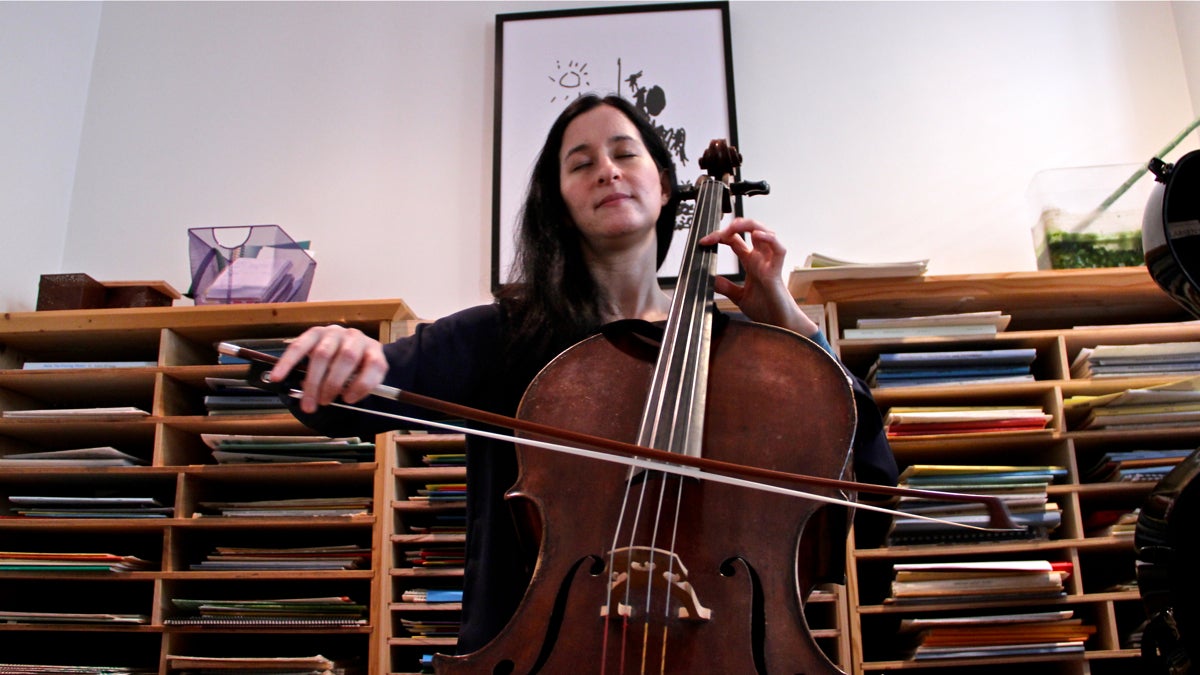Exploring the harmony between musician, instrument
Listen
Yumi Kendall
Concert violinist Vadim Gluzman plays an original Stradivarius violin, made in 1690 in Northern Italy. It was the violin played by Leopold Auer (it is known as the “Auer” Stradivarius) for whom Tchaikovsky wrote his Violin Concerto. In a way, he wrote that concerto for this particular instrument.
“I think that this thing is alive, and it has a soul,” said Gluzman, when he visited in 2014 to perform with the Philadelphia Orchestra. “We leave imprints. Those that play it, we leave our stamps. Whether I want it or not, it’s coming out.”
The history of the Auer violin is part of its mystique, and — by proxy — part of the way we appreciate its sound. But sentimentality can get in the way of science.
“I encourage people to be less emotional,” said Samuel Zygmuntowicz, one of the finest living luthiers — maker of stringed instruments — in the world. “I want them to not react to the mystique of things, but to really get in touch with how they really feel about it. A big part of my work is to get people to be frank about how they feel with an instrument.”
From his Brooklyn studio, Zygmuntowicz tailors instruments for classical stars including Yo-Yo Ma, Joshua Bell, and all the members of the Emerson String Quartet. He makes, on average, eight instruments a year; the violin he made for Isaac Stern sold at auction for $130,000.
He can make you an exact copy of a Stradivarius violin down to the smallest detail, but that wouldn’t be good enough.
“The difference between a great violin and a pretty good violin is very, very small,” he said. “That increment is hard won. You don’t get it by copying. You do it by working directly with the musicians.”
Zygmuntowicz does extensive research into exactly how an instrument behaves, in situ. Through his Strad3D project, he collaborates with scientists and engineers to monitor masterpiece violins with vibration-scanning lasers as they’re played. That data is used to make exaggerated 3D animations of how the instrument vibrates, where it warps and wobbles, to better understand how its construction generates its tone.
“The real violin is not a piece of wood you hold in your hand. It is interacting with the player,” said Zygmuntowicz. “All the really important functions of the violin were things we couldn’t see, but were very real.”
A violin reacts to different players differently, depending on the touch and tone of the musician. Zygmuntowicz presented some of his research as part of “String Theory,” a two-part series of talks and performances during the Philadelphia International Festival of the Arts.
Yumi Kendall, a cellist with the Philadelphia Orchestra, will also participate in the String Theory talks. In November 2013, she bought a new instrument to replace the cello she had been playing for 17 years.
“I didn’t tell that one that I got a new No. 1,” said Kendall, pointing to the cello leaning against the wall of her practice room. “I got that in 1996 when I was 15. I won competitions with it. It got me into Curtis [Institute of Music]. It got me into the orchestra. I have much gratitude for that cello.”
At the risk of offense, Kendall bought an original Vincenzo Postiglione made in 1877. While shopping, she said, she paid no attention to the instrument’s pedigree or history.
“All I care about is how I feel playing it and how we sound together,” she said, adding that the Postiglione feels like dark melted chocolate. “I love that feeling when sound becomes physical, you can feel it on you.”
A great cello may not necessarily sound its best in the hands of a great player, and vice-versa. Zygmuntowicz’s research shows with graphic evidence that an individual instrument has a unique vibration profile, a personality that can either clash or resonate with the tone of the musician playing it.
Rather than a wooden box producing notes, a violin is a complex machine of subtle colorings that will push, or restrain, the musician. Like an artistic partner, it can harshly scold, warmly forgive, and inspire.
But does it have a soul? Probably not.
“I have not named this cello,” said Kendell while cradling her Postiglione. “I only think of it as chocolate.”
WHYY is your source for fact-based, in-depth journalism and information. As a nonprofit organization, we rely on financial support from readers like you. Please give today.





